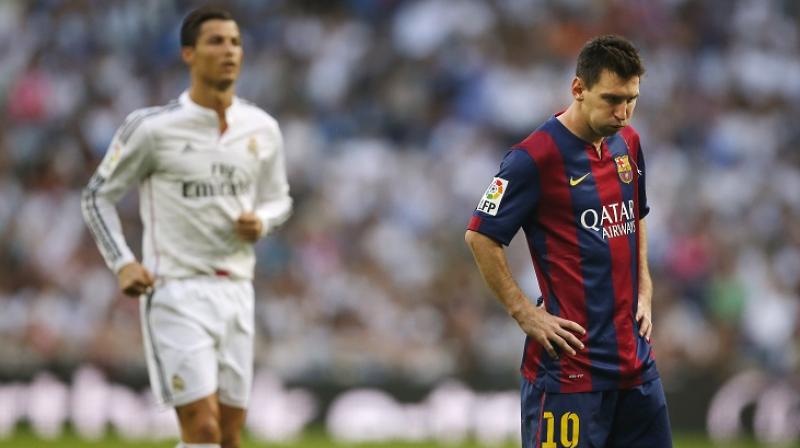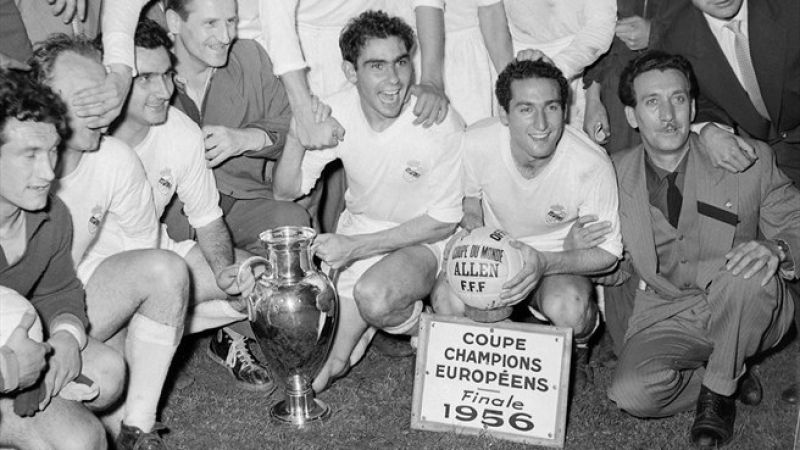The history of El Clasico' rivalry that goes deeper than Ronaldo vs Messi narrative

When it comes to big rivalries in the world of sports, it doesn’t get much bigger than the biggest football match in Spain – FC Barcelona vs Real Madrid. Not only is this match one of the biggest rivalries in Spain, but it is also passionately followed by football fans all over the world.
Both Real Madrid and Barcelona offer the fans two different narratives, which often split the world of football down the middle.
While Real Madrid are seen as the big club from the Spanish capital that can attract some of the biggest stars from all over the world, their arch-rivals are seen as the club that has a policy of growing and nurturing talented players from the grassroot level, and putting together a world class team.
Normally, football rivalries are fierce, when two teams from the same city face off against one another. However, when it comes to ‘El Clasico’, the demographics change considerably, as the two clubs are separated by more than 600 kilometres.
The Rivalry between Real Madrid and Barcelona is less about geography, and more about the political history of Spain.
'El Clasico' under the Franco regime
 According to conspiracy theorists, General Franco had a big hand behind Real MAdrid's success in the 1940s and 1950s. (Photo: AFP)
According to conspiracy theorists, General Franco had a big hand behind Real MAdrid's success in the 1940s and 1950s. (Photo: AFP)
Real Madrid, being from the Spanish capital, are often associated with the right-wing authoritative regime of General Franco who reigned over the country from 1936 to 1975. Meanwhile, Barca are seen more as the liberal separatist entities from Catalonia, that have stood up to the wealth and might of the centre.
The Franco regime had placed emphasis on homogenising the language, and culture of the country. The iron-fisted ruler had even banned the use of any language other than Castellano Spanish, which was the official language of the nation.
This however, did not go down too well with the people from cultures different from Castellano – namely Catalonia and the Basque Country; subsequently, FC Barcelona and Athletic Bilbao became bastions of resistance against the centre.
There are plenty of theories (mostly unconfirmed) about the ‘Generalisimo’s’ links with Los Blancos.
Even the signing of Real Madrid legend Alfredo Di Stefano, who scored 282 goals from 216 appearances for the club, has a few conspiracy theories surrounding it.
According to reports, Barcelona were close to signing Di Stefano, who is highly regarded by Manchester United legend Sir Bobby Charlton. However, Real Madrid swooped in, and signed the Argentine star.
A number of conspiracy theories have cropped-up about General Franco’s links with the Di Stefano transfer. One of the most ludicrous theories states that the Generalisimo had a mole in the Catalan club, who scuppered the transfer.
However, a largely accepted theory is that Franco had helped Real Madrid take advantage of the confusion over Di Stefano’s ownership (between Argentine club Plate and Colombian club Millonarios).
Barca’s biggest Clasico defeat
Yet another conspiracy theory about General Franco’s interference dates back to a time when World War II was till going on. The Catalans had defeated Real Madrid 3-0 in the first leg of the 1943 Copa del Rey semi final, at their home ground, and were expected to progress to the summit clash quite easily.
However, reports suggest that the Barca players received a little visit from Franco’s men ahead of the second leg; Real Madrid won the match 11-1.
While there is no real evidence to suggest that Franco’s men had threatened the Barcelona players, an 11-1 defeat is not expected from a club that had just defeated the same opposition 3-0 a few days back.
 Real Madrid players after winning the 1956 European Cup. (Photo: AFP)
Real Madrid players after winning the 1956 European Cup. (Photo: AFP)
It was during this time, that Real Madrid experienced a lot of success, winning five European Cups from 1956 to 1960. The Generalisimo himself was a frequent visitor to Los Blancos’ games during this period – something that fuelled the conspiracy theories further.
Total football comes to Spain
In the modern day, we see Barcelona as the bastion of tiki-taka football, a way of playing the game that is considered very pleasing to the eye of the spectator. While the Barcelona’s beautiful game has been perfected by Pep Guardiola in the modern era, it was another footballing great – Johan Cruyff – who brought the stylish game to the Catalans.
Cruyff, who moved to Barcelona for approximately USD 2 million in 1973, helped them win the league title for the first time since 1960, in his very first season, defeating Real Madrid 5-0 at the Santiago Bernabeu, on their way to the title. The New York Times had even gone on to state, after the 5-0 victory, that Cruyff had done more for the Catalonian spirit in 90 minutes, than all the years of political strife.
 Johan Cruyff revolutionised football in Barcelona, both as a player, and as a manager. (Photo: AFP)
Johan Cruyff revolutionised football in Barcelona, both as a player, and as a manager. (Photo: AFP)
The Dutchman was instantly identified as the visionary player, who carried the spirit of the Catalonian freedom struggle through his revolutionary style of playing football.
Cruyff later came back to Barcelona as their manager in 1988, and brought about yet another revolution – this time in their youth academy La Masia.
Cruyff insisted that La Masia regularly produce quality players for the first team. Not only did he ensure the development of the footballing aspect, but he also made sure that the young players got adequate education, for overall development.
Stars like Lionel Messi, Xavi Hernandes, Carles Puyol, Andres Indiesta, and many more have all come out of the academy, and have gone forward to take both the club and country to glory.
Their exploits on the field have made both Real Madrid and Barcelona two of the biggest clubs in the world. Due to the huge popularity that they enjoy, they have some of the largest global fan bases, intensifying the rivalry even more.
At the base of it all, lies the political and cultural difference, which makes the contest between them such a fascinating one. While, Los Blancos represent strength, and prosperity, the Blaugrana represent progressiveness and liberty.
However, come kickoff on Sunday night, the history will have another chapter to remember as the two clubs renew rivalries at the Camp Nou.
Will it be Karim Benzema or Luis Suarez, Luka Modric or Andres Indesta, Sergio Ramos or Gerard Pique, or indeed, will it be Cristiano Ronaldo or Lionel Messi, who will rein victorious on the night? Only time can tell.

